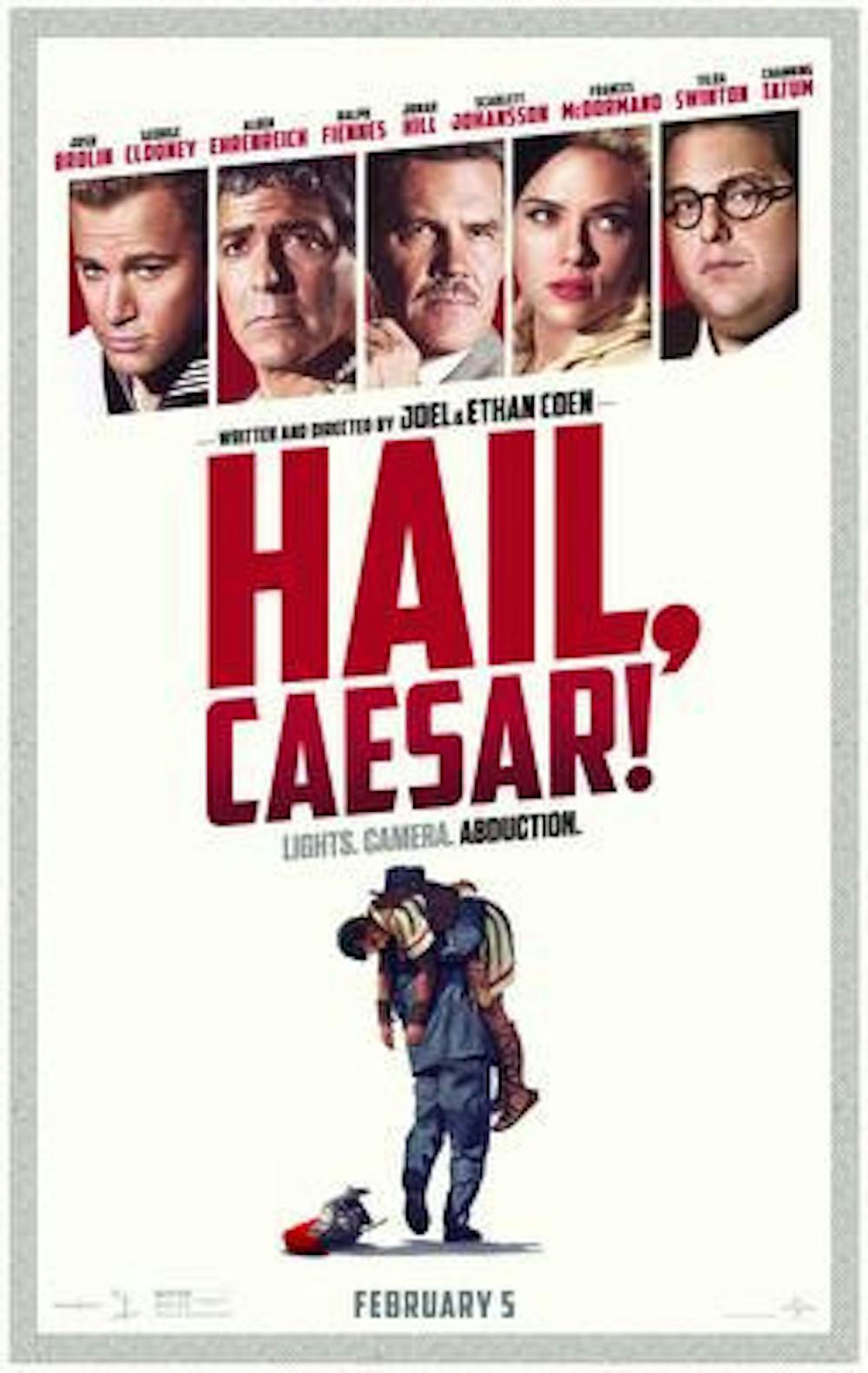The Coen Brothers, known for such masterpieces as “Fargo,” “The Big Lebowski” and “O Brother, Where Art Thou,” have crafted yet another film to go down in their masterful oeuvre.
“Hail, Caesar!” is an enjoyable take on 1950s Hollywood and its many nuances and shifting tides. The film follows a flamboyant cast of characters, such as Baird Whitlock (George Clooney); an amiable but simple screen actor Eddie Mannix (Josh Brolin), who’s a Hollywood fixer responsible for maintaining the image of his studio; and Hobie Doyle (Alden Ehrenreich), a charismatic yet naïve screen actor. The stories, each intermingling with one another, work together to create a dramatically compelling narrative while providing ample comedic farce.
The main story of the film deals with Mannix, who is struggling to deal not only with the loss of passion he once had for his work but also to maintain his honesty with his wife and his pastor. Mannix is an emotionally complex character, and, because of this, the viewer is readily invited to relate with him. He is the emotional center of the film, in stark contrast with the characters of Doyle and Whitlock, who are often vehicles for comedic relief.
These relations within the film allow it to have a natural flow and resonance. The comedic value of Doyle and Whitlock, not to mention Thora and Thessaly Thacker (both played by Tilda Swinton) and Laurence Laurentz (Ralph Fiennes), contrasts keenly and brightly with Mannix’s moral and emotional dilemma as well as the politically charged undertones of communism and McCarthyism in the Hollywood of 1950s.
The film seems to be a particularly personal act in historical excavation for the brothers as they make an attempt to reconstruct the Hollywood of the past as they see it now.
The Coen Brothers, both born in the 1950s, have seemingly taken on this filmmaking endeavor to present to the viewer how they perceive the decade of their birth and young childhood. The brothers deliver spectacularly, offering the chance to glimpse just how much their perceptions of the 1950s have influenced their filmmaking. They take into account many diverse subjects and weave them together — calling to mind the fast-paced and often confusing thrillers of Quentin Tarantino — with their playful narratives and vivid sceneries.
The shooting, for instance, lends the movie a patina of age. Each set and scene invites the viewer into this reality that the brothers have constructed. The colors and the props all seem to have been torn directly from the 1950s, and the realism they create is grand in scope.
“Hail, Caesar!” presents the viewer with a vibrant pastiche of narratives and pompous characters. There is no shortage in any way of interesting scenarios and humorous situations.
The Coen Brothers have enjoyed tremendous success. “Hail, Caesar!” continues this tradition and builds upon the brothers’ impressive body of work.
‘Hail, Caesar!’ provides glimpse to 1950s Hollywood

Courtesy of Universal Pictures
"Hail, Caesar!," the Coen Brothers' latest cimenatic venture, delights with a fast paced plot and comical antics.



